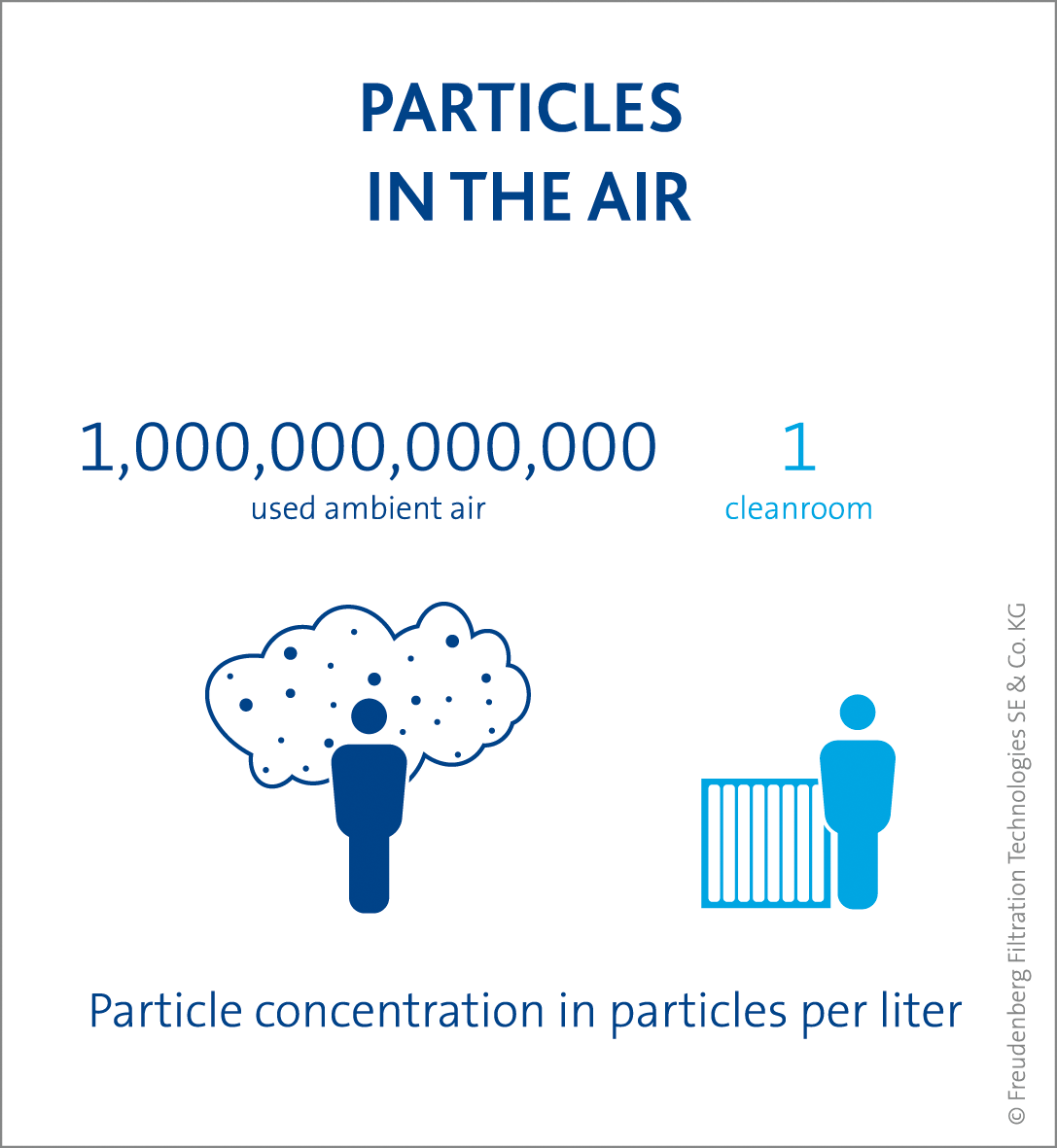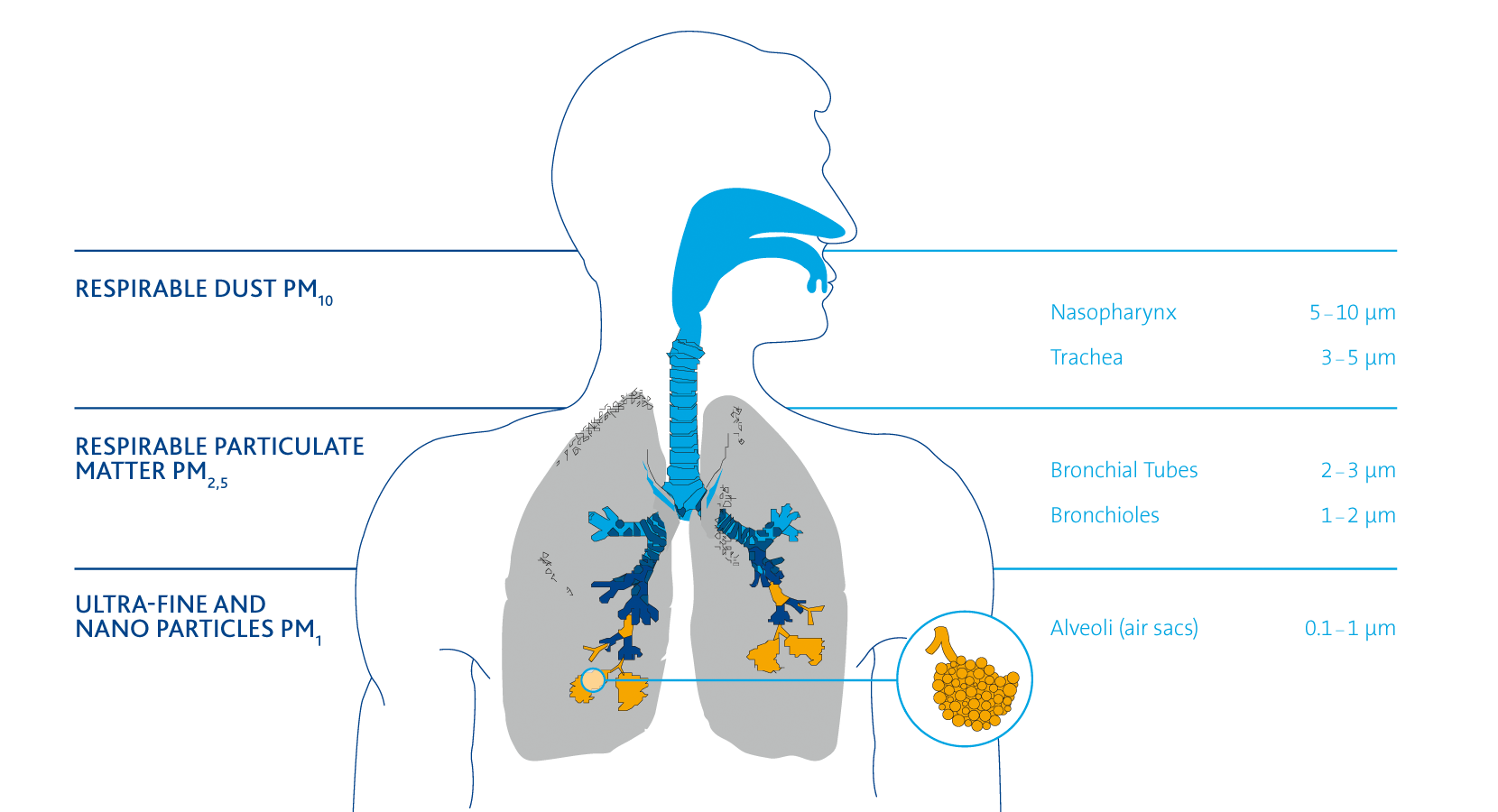The World of Dust
Discover the Freudenberg solutions for Dust Filtration and purification
Small particles – big impact
Why filtration
Like clean water, clean air is also an elixir of life: invisible but indispensable. People breathe every four seconds, that is roughly 22,000 breaths every day. In 24 hours, each of us breaths in about 15,000 liters of air.
With every breath, large quantities of tiny particles enter our body. Even in presumably healthy rural air, there are millions of particles such as pollen, fungal spores, mold, soot, bacteria and viruses. In a large city, there are thousands of times as many particles, in the billions.
3 million !
Fine dust is particularly insidious.
The smaller the particle the more dangerous the dust is.
Over three million people die every year from the consequences of heavy air pollution with fine dust. In comparison with fine dust, small grains of sand are gigantic boulders. When inhaled, fine dust enters into the deeper respiratory tract and sometimes even moves directly into the blood.
Health alert! In vehicles and buildings, where we spend the majority of our time, the air is often much more contaminated than outdoors. Not to mention smoky indoor air with 100 billion particles per liter.
This is why it is so reassuring that our filters and filter systems reliably separate the essential elements of life from the harmful pollutants. So that everyone can breath in deeply. With pure pleasure and a high quality of life! While out for a drive, at the theater, on a cruise ship or just passing the time in the office break room.
Freudenberg filters are even more critical in hospitals, where they keep pathogens such as spores, bacteria and viruses out of operating rooms and intensive care wards. And in industry? In the large paint shops of the automotive industry, roughly 10,000 Freudenberg high-performance filters purify about 15 million cubic meters of air every hour: for brilliantly glossy paintwork – without touch-up costs.
Particulate matter can be either natural or man-made.
Man-made sources of particulate matter include,
for example, cars and trucks, incinerators, power and heating plants, stoves and heaters in the home or within agricultural and industrial processes. In the urban environment, traffic also plays a significant role. In this setting, particulate matter is created from diesel soot, fine brake and tire wear and road dust.
Natural sources of particulate matter include,
among other things, emissions from volcanoes and seas, soil erosion, forest and brush fires, viruses, bacterial and fungal spores, and algae or cell particles.
The terms “particulate matter” (PM) or “suspended particulate matter” refer to small to tiny particles
These tiny particles, which float for a while in the atmosphere and do not immediately fall.
Particles are divided into groups according to size.
Dust particles with an aerodynamic diameter smaller than 10 microns (1 micron = 1 thousandth of 1 mm) belong in the PM10 class. Just image: an average human hair has diamter of 60-80 microns.
PM10 in turn consists of three subsets:
- Coarse
Particles in the size range from 2.5 to 10 microns - Fine (also PM2.5)
Finer particles in the size range of less than 2.5 microns - Ultra-fine
Tiny particles in the size range of less than 0.1 microns
All from a single source
Complete air filter systems and comprehensive service
From Concept to design to manufacture to installation to commissioning to monitoring to filter supply and service.
The key to an energy efficient and hygienic air quality ventilation system is a customized system design combined with a comprehensive maintenance service. All this you can get from a single supplier.
 Language / Country
Language / Country














